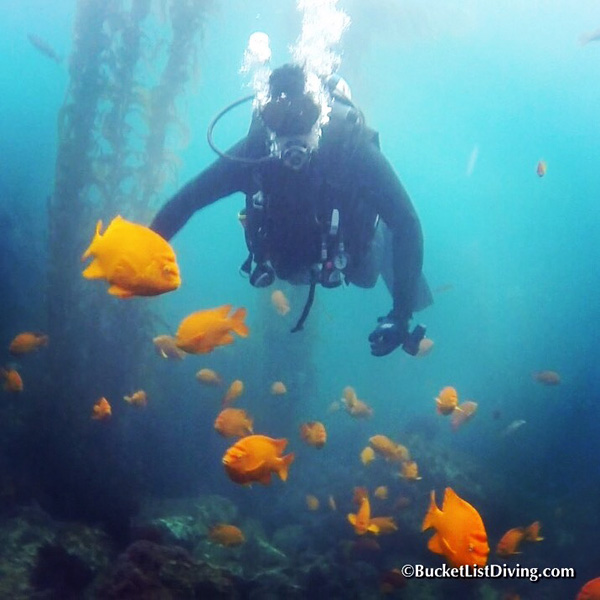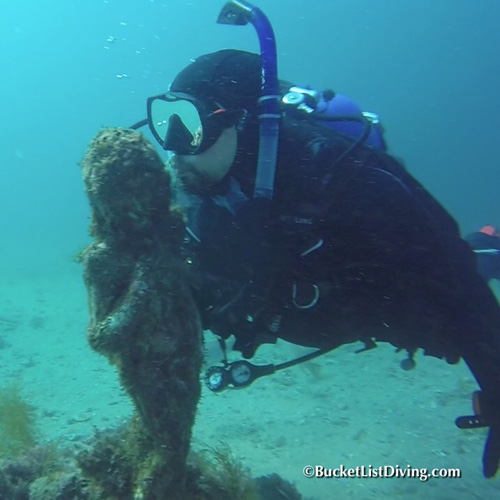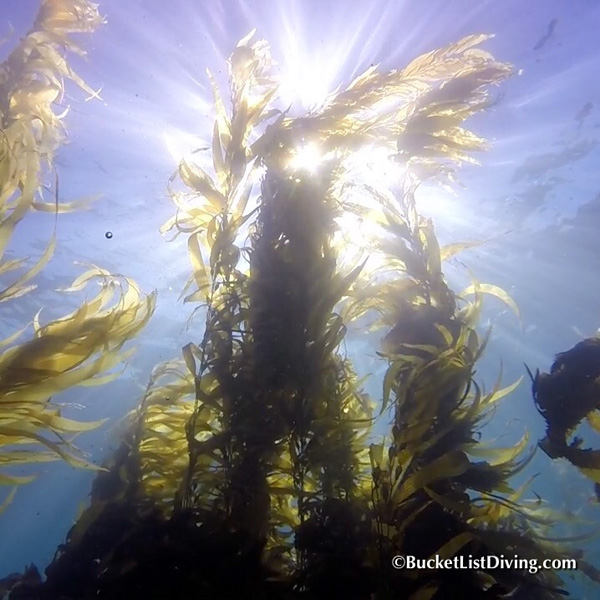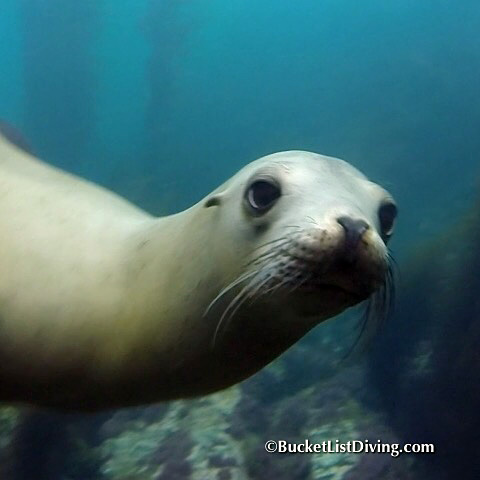“Most people do a little shore dive for their first California dive –you did the Yukon! Good job!” said one of the other divers.
I must have seemed more confident than I felt on my first dive in the Pacific Ocean, the 57th dive in my log book. Though I was awed to experience the massive ship leaning at a 45 degree angle against the sand, wallpapered with white metridium and an occasional vibrant orange nudibranch, I spent the dive nervously struggling with surge and my own buoyancy.
Story by Corey Schultz, Photos by Kevin Yuskoff
Mission Bay, San Diego, was an entirely different blue world than I had experienced previously. I got my Open Water certification in the limestone springs of northwestern Florida: the dim and moveless water of Devil’s Den and the iceberg-colored Blue Grotto. Constant 72 degrees, requiring only a 3mm wetsuit with neither hood nor gloves. Most of my following dives were done in the 20 foot deep Atlantic by Marathon Key, which is usually as still as a glass pond and warm as summer air. Likewise, the quarry in Maryland where I earned my AOW had zero movement (though it did have one single solitary fish). It did give me some experience wearing a 7mm wetsuit with boots, gloves and a hood. So, doing a giant stride into Mission Bay above the Yukon, I thought I had experienced cold before.
The cold of the Pacific, per se, was not an impediment –but the extra gear required by the cold certainly is –especially when you add movement: surge and current. The restrictions on movement from a 7mm wetsuit take some acclimation. Gloves numb your sense of touch; several times upon attempting descent, my mask inexplicably flooded. Inexplicable until I realized the seal of the mask was over the neoprene edge of my hood, not under it. I couldn’t feel the difference with gloves. On subsequent dives I asked a fellow diver to check my mask before entering. My body was sludgier and slower while encased in all that neoprene.
The added insulation caused me to carry heavier weights. Wearing a 7mm “long john” I was actually wearing 14mm over my core. While I was nice and toasty warm (not really; icicles trickled up and down my arms, and I couldn’t feel my feet), I needed 16-20 lbs of weights.
A few months after my dive to the Yukon, a Florida friend made the trek to the West Coast (best coast…), and we took the ferry from Long Beach to Catalina Island with diving on our minds. Entering the Pacific at Casino Point was more strenuous than expected. We staggered down the steps in our rented 7mm wetsuits, belted with 20 lbs of lead. Where the steps met the sea, we learned about surge and timing. Rise and fall with the surge. Don’t fight it. Timing is everything.
Sounds like it might not be worth the effort so far? Not at all!! Pacific diving has its advantages. The colors are more subtle, but you get golden kelp forests and marine mammals. The kelp creates swaying yellow labyrinths and swimthroughs. You can swim through their fronds gently, soothing down their waving underwater hair.
The subtle color of the kelp is juxtaposed against a few bright dots, like the juvenile garibaldi flecked with brilliant blue spots. I love the adult bright orange garibaldis, but my Florida native dive buddy Mary calls them, “the annoying puppydog of the sea.” I can’t disagree that they are mask-tapping dissidents sometimes, but they are quite beautiful.
The California Bight is not the Sea of Cortes or Key Largo. You won’t soar through clouds of silvery jacks, float among sergeants majors, watch (and hear) eight three-foot-long midnight parrotfish feed upon coral … But it was in California –on a boat dive in Santa Barbara — where a young sea lion swam among us, flicking between the divers, and even followed us when we pulled ourselves up the ladder, dark neoprene sluicing water. The boat unmoored and departed, but the slick beige sea lion surged around the stern, as if he was saying, “You guys…. Come back… let’s play…”
So in the spirit of that young sea lion … here are some tips on how to have fun under the California waves:
- Take a refresher course.
- Go with a dive guide.
- Revamp your gear. You will need a 7mm, hood, gloves and boots.
- Take it slowly. It takes experience to deal with the surge and cold. Regardless of your certification level, start with easier, more shallow dives. I recommend Casino Point off Catalina Island or a shore dive from Veterans’ Park in Redondo Beach.
- Consider a Peak Performance Buoyancy class. After struggling through my first two west coast dives, I took the PPB course for my third and fourth dives. I built skills and also confidence in the new underwater environment.
And, above all: enjoy California.
Story by Corey Schultz, Photos by Kevin Yuskoff




